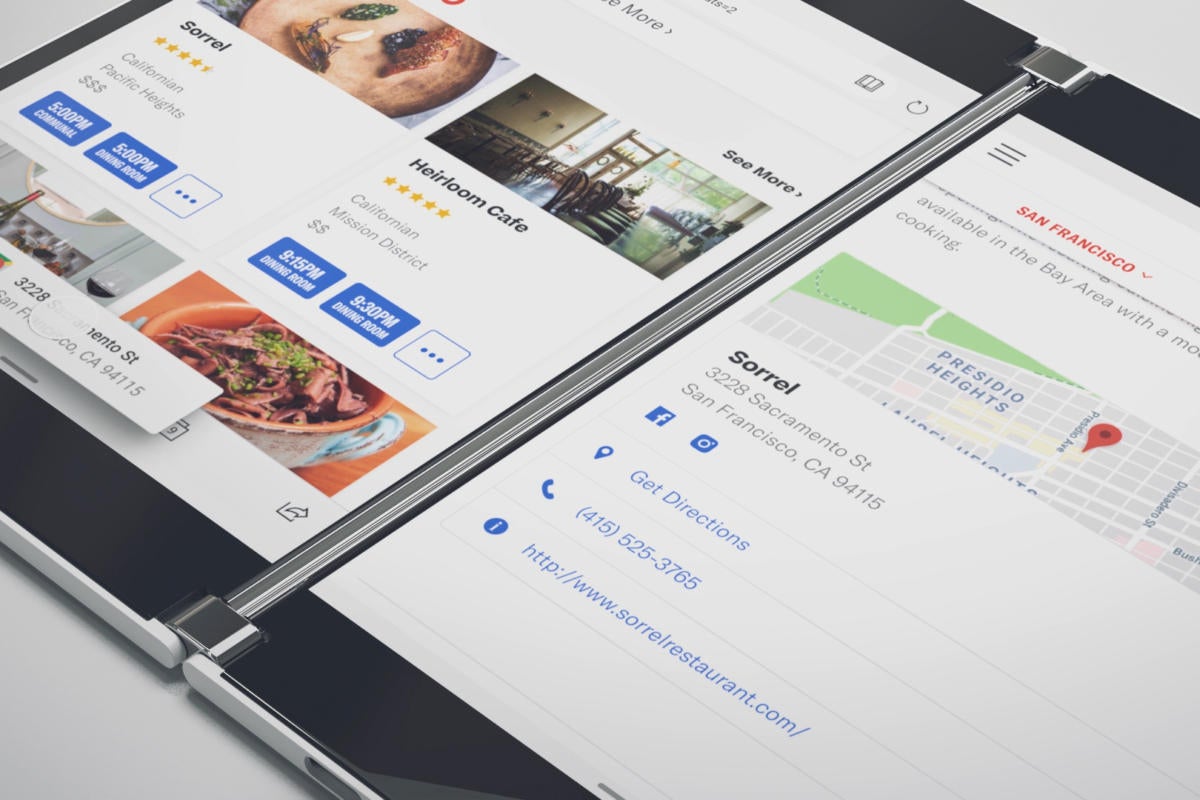
Samsung recently announced its second-generation Galaxy Z Fold 2 5G and Microsoft announced its Surface Duo foldable devices. Others have tried foldables in the past with limited success (LG, Huawei, Motorola), so why push these out these now?
The market for smartphones has gone tepid, with overall sales falling (and not just because of COVID-19). With little incentive to upgrade due to a lack of major compelling new features, couple with increasing prices on premium smartphones, people are keeping their devices longer. (This is true for both Android and iOS phones.)
Users who once kept their devices for an average of 12 to 18 months now routinely stretch that out to a more PC-like 24 to 36 months. Vendors believe, rightly so, that new and innovative products will drive sales in an otherwise saturating market – Apple has played this strategy well over the years. And innovative new products like foldables can drive a renewed interest and increase sales.
These devices can be good for the manufacturers
Since they are premium products, the margins are quite good and help the bottom line well out of proportion to the relatively small sales numbers. These “halo” products showcase the engineering prowess of particular vendors, giving them bragging rights and, as a result, expanded brand preference with consumers. So even in a relatively small market compared to mainstream mid-tier devices, there is a real advantage for smartphone makers to go this route. (This strategy is similarly used by many PC vendors, as well as smart appliances, cars, and other commodity products.)
Notably, much of the advanced engineering created for this class of high-end devices, both in hardware and software, will eventually make it to lower tier devices. That means the new designs and advanced manufacturing processes necessarily created for these devices can be leveraged for future hardware, lowering the overall risk and the substantial development costs.
Finally, this is also a win for Google’s Android, as the new features needed by these devices (e.g., spilt screens, connections to the Windows world, multitasking, etc.) make Android a more compelling OS.
Who will these foldable devices appeal to?
Based on the somewhat different design targets and price points, the Microsoft Surface Duo ($1,400) will probably appeal more to business users who are focused on Microsoft productivity apps, while the Samsung Galaxy Z Fold 2 ($2,000) will have even broader appeal to high-end users with social media and/or creator aspirations.
I don’t expect the Duo to sell in great numbers (by smartphone standards) as Microsoft’s distribution and brand recognition in smartphones is limited. But Microsoft doesn’t need to sell hundreds of millions of devices to be successful, as its other Surface products have shown. With a tight coupling to Microsoft’s backend productivity (Office 365) and other services (Xbox), each device represents a revenue stream for Microsoft far beyond just the purchase price of the Duo alone.
Samsung, on the other hand, has a huge distribution channel of carriers and third-party sellers that can essentially make the devices available worldwide, so it will see a much bigger uptake. And by offering a family of foldables (including the Galaxy Z Flip 5G priced lower at $1,300 and targeted primarily at social media conscious millennials), Samsung can cover a wider market space.
Will users pay as much as $2,000 for a phone? The short answer is yes.
Some have speculated that high prices will make these devices unsellable. But buyers will spend if they perceive enough value in usability or “bragging rights.” (Look at the success of high-priced laptops, some at or near the $2,000 price.) I don’t expect price to be a big barrier to adoption, especially since it will likely drop over time. And since these early class devices are hard to manufacture, the relatively high price keeps the vendors from being overwhelmed by demand while they get their processes tuned to higher volumes. So while the price might limit some adoption, it likely will not be much of an impediment to adoption by the targeted user base.
The bottom line
I expect this form factor to emerge as an important subcategory for virtually all the phone vendors to compete in (and I expect that will eventually include Apple). Manufacturers will continue to innovate, both at the high-end and scaled down to the mid-tier. I further expect the foldables market to capture 10% to 20% of the premium product space within the next two or three years, influenced heavily by business buyers who are much less put off by the price tag and more focused on tools that increase their productivity.
Finally, I expect to see more innovative form factors coming from the vendors as they try to revitalize a smartphone market that needs some boosting, and repurpose some of the leading edge technology going into these devices.



